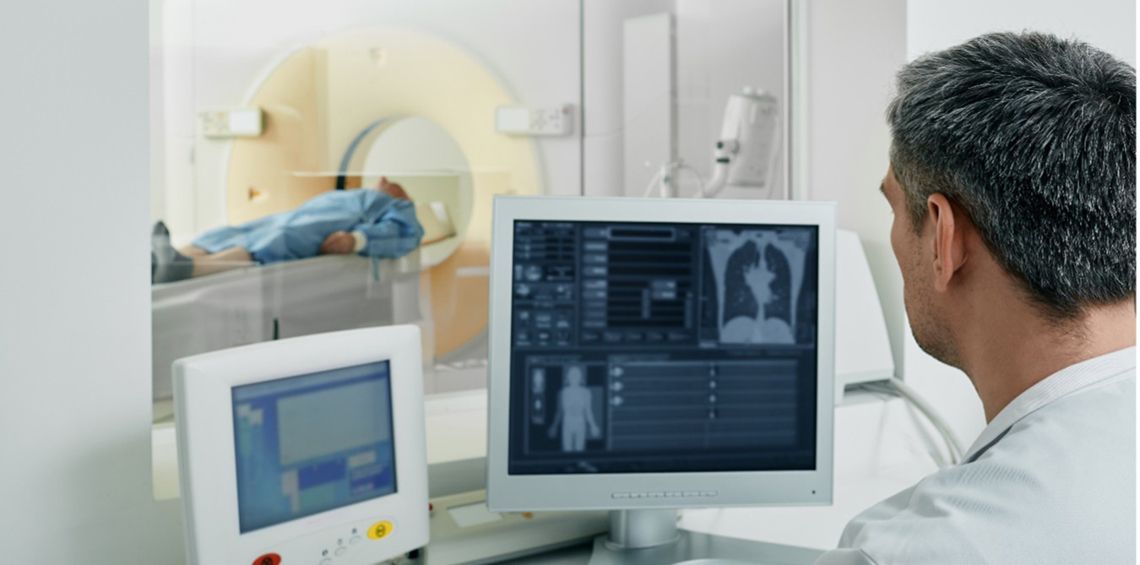After moving to DC from New York City, Robert had a heart-to-heart conversation with Paul Silver, MD, clinical associate professor of medicine at GW SMHS, his new primary care physician, about his decades- long cigarette smoking habit. He was concerned about the effects of his smoking on his health as well as that of his family members. His doctor recommended annual lung cancer screenings, and that, Robert
said, “Saved my life.”
The screenings are low-dose helical or spiral computed tomography (CT or CAT) scans. The CT scan is an x-ray, which is then turned into a detailed, 3-dimensional image that shows any abnormalities, such as nodules or tumors. No injections are required.
Robert, 77, had a long international career that took him to Europe, Asia, and East Africa, where his work environment at that time did little to discourage his smoking. At one point, he was smoking more than two packs of cigarettes a day. Back in the States, he was able to cut back to a pack and smoked only outdoors, but he was never able to kick the habit completely.
For well over ten years, Robert had yearly lung cancer screenings. “I thought the idea of screenings made a lot of sense, especially given my history,” said Robert. “The screenings were very easy – painless and completely non-invasive. There was some level of anxiety about what might turn up because you’re facing the dreaded C-word, and that’s very serious. The screening process itself was quite simple and straightforward.”
Currently, lung cancer screening exams are recommended for high-risk adults. These patients have at
least a 20 pack year cigarette smoking history. A pack year is calculated by the number of packs a person
smokes per day multiplied by the number of years that person has smoked.
Robert’s scans indicated lung nodules but did not at first sound any alarm bells with his medical team.
Nodules are small clumps of cells called granuloma, which can calcify or harden, causing a benign
nodule. Many people have lung nodules, and they are rarely cancerous. But if a nodule’s growth
accelerates or its appearance changes, then it’s time to take a closer look. That was the case after
Robert’s lung cancer screening in 2018.
“Dr. Keith Mortman with the GW Cancer Center saw significant changes that caused concern, and he estimated the chance of malignancy was about 80%,” said Robert. Surgery to remove the impacted nodule was scheduled. “It was then that the importance of the screenings really sank in,” explained Robert. “The life-saving nature of the procedure, the effects of smoking on my health, everything – it all came together.”
After surgery, it was determined that the tumor was caught at a very early stage, “It was a still minimally invasive adenocarcinoma, almost at stage 0,” said Robert. “Those screenings saved my life. It’s as simple as that, really.” A stepped-up scan schedule followed surgery, with Robert having them once every three months for the first year and then every six months for a total of five years.
On Sept. 13 of this year, Robert received a certificate of completion and was declared cancer-free. He no longer smokes – he smoked his very last cigarette the night before his surgery – and as of his most recent screening, there is no evidence of any recurrent or residual disease in his lungs.
“It’s amazingly good news,” said Robert. He’s retired now, working on his memoirs, and extremely grateful that the screenings caught the changes in his nodules before the cancer was too far along for treatment to be successful. “This is a new chapter in my life. It’s meant a wonderful opportunity to spend many more years with my wife, my children, my grandchildren, my whole family, and friends.”
And that is a very happy ending.
The GW Cancer Center’s Thoracic Oncology Program’s interdisciplinary and holistic approach offers complete cancer care for every patient. The team consists of specially trained surgeons, radiation oncologists, interventional radiologists, and interventional pulmonologists who diagnose, stage, and treat chest cancers.




